当前位置:网站首页>Layoutmanager layout manager: flowlayout, borderlayout, GridLayout, gridbaglayout, CardLayout, BoxLayout
Layoutmanager layout manager: flowlayout, borderlayout, GridLayout, gridbaglayout, CardLayout, BoxLayout
2022-07-04 05:53:00 【Gentle ~】
Recommended reading :Java Detailed explanation of graphical interface (AWT、Swing) special column
List of articles
summary
Before , We introduced Component There is a method in setBounds() You can set the position and size of the current container , But we need to be clear about one thing , If we manually set the location and size of components , It will cause the non generality of the program , for example :Label label = new Label(" Hello , The world ");
Created a lable Components , In many cases , We need to get lable The width and height of the component Hello , The world The width and height of the string itself are consistent , This size is called Best size . Due to operating system differences , For example, in windows On , We want to achieve this effect , Need to Lable The width and height of the component are set to 100px,20px, But in Linux On the operating system , It may be necessary to Lable The width and height of the component are set to 120px,24px, To achieve the same effect .
If you want our program to run under different operating systems , Have the same experience , Then manually set the position and size of the component , It's a disaster, no doubt , Because there are too many components , You need to set the size and location under different operating systems . To solve this problem ,Java Provides LayoutManager Layout manager , The size of components can be automatically adjusted according to the running platform , Programmers no longer have to manually set the size and location of components , Just select the appropriate layout manager for the container .

Panel By default FlowLayout Manage its internal component layout .Window Under the Frame、Dialog as well as ScrollPane By default BorderLayout Manager .
FlowLayout
summary 、 Constructors
stay FlowLayout Layout manager in , Components flow in a certain direction like water flow ( array ) , Encounter obstacles ( The border ) Just turn back , Start again . By default , FlowLayout The layout manager arranges all components from left to right , If you encounter a boundary, you will fold back to the next line and start again .
| Construction method | Method function |
|---|---|
| FlowLayout() | Use the default Alignment and default vertical spacing 、 Create horizontal spacing FlowLayout Layout manager |
| FlowLayout(int align) | Use the specified alignment and default vertical spacing 、 Create horizontal spacing FlowLayout Layout manager |
| FlowLayout(int align,int hgap,int vgap) | Use the specified alignment and the specified vertical spacing 、 Create horizontal spacing FlowLayout Layout manager |
FlowLayout The arrangement direction of components in ( From left to right 、 From right to left 、 Wait from the middle to both sides ) , This parameter should use FlowLayout Static constant of class : FlowLayout. LEFT 、 FlowLayout. CENTER 、 FlowLayout. RIGHT , The default is left alignment .
FlowLayout The component spacing in is set by an integer , Unit is pixel , The default is 5 Pixel .
Code example

import java.awt.*;
public class FlowLayoutDemo {
public static void main(String[] args) {
//1. establish Frame object
Frame frame = new Frame(" Test here FlowLayout");
//2. modify Frame The layout manager of the container is FlowLayout
frame.setLayout(new FlowLayout(FlowLayout.LEFT,20,20));
//3. Go to Frame Add 100 individual button
for (int i = 0; i < 100; i++) {
frame.add(new Button(" Button "+i));
}
//4. Set up Frame For the best size
frame.pack();
//5. Set up Frame so
frame.setVisible(true);
}
}
BorderLayout
summary 、 Constructors
BorderLayout Divide the container into EAST 、 SOUTH 、 WEST 、 NORTH 、 CENTER Five areas , Ordinary components can be placed here 5 In any one of the regions ,BorderLayout Layout The layout diagram of the manager is shown in the figure .

When changing use BorderLayout The size of the container , NORTH 、 SOUTH and CENTER Regional level adjustment , and EAST 、 WEST and CENTER Area vertical adjustment . Use BorderLayout There are two points to note :
1. When using BorderLayout When adding components to the container of the layout manager , You need to specify which area to add to . If you do not specify which area to add to , It is added to the middle area by default ;
2. If you add multiple components to the same area , The components put in later will overwrite the components put in earlier ;
| Construction method | Method function |
|---|---|
| BorderLayout() | Use the default horizontal spacing 、 vertical Spacing creates BorderLayout Layout manager |
| BorderLayout(int hgap,int vgap): | Use the specified horizontal spacing 、 Vertical spacing creates BorderLayout Layout manager |
Code example 1

import java.awt.*;
public class BorderLayoutDemo1 {
public static void main(String[] args) {
//1. establish Frame object
Frame frame = new Frame(" Test here BorderLayout");
//2. Appoint Frame The layout manager for the object is BorderLayout
frame.setLayout(new BorderLayout(30,5));
//3. Go to Frame Specify to add a button component in the southeast, northwest and northwest respectively
frame.add(new Button(" East button "), BorderLayout.EAST);
frame.add(new Button(" West button "), BorderLayout.WEST);
frame.add(new Button(" South button "), BorderLayout.SOUTH);
frame.add(new Button(" North button "), BorderLayout.NORTH);
frame.add(new Button(" The middle button "), BorderLayout.CENTER);
//4. Set up Frame For the best size
frame.pack();
//5. Set up Frame so
frame.setVisible(true);
}
}
Code example 2
If you don't put components in an area , Then the area will not be blank , It will be occupied by other areas .
import java.awt.*;
public class BorderLayoutDemo2 {
public static void main(String[] args) {
//1. establish Frame object
Frame frame = new Frame(" Test here BorderLayout");
//2. Appoint Frame The layout manager for the object is BorderLayout
frame.setLayout(new BorderLayout(30,5));
//3. Go to Frame Designated South , north , Put in a button , Put one in the middle area Panel
frame.add(new Button(" South button "), BorderLayout.SOUTH);
frame.add(new Button(" North button "), BorderLayout.NORTH);
Panel panel = new Panel();
panel.add(new TextField(" Test text "));
panel.add(new Button(" The middle button "));
frame.add(panel, BorderLayout.CENTER);
//4. Set up Frame For the best size
frame.pack();
//5. Set up Frame so
frame.setVisible(true);
}
}
GridLayout
summary 、 Constructors
GridLayout The layout manager divides the container into grids separated by vertical and horizontal lines , Each grid occupies the same area size . When using GridLayout When adding components to the container of the layout manager , The default is from left to right 、 Add to each grid from top to bottom . And FlowLayout The difference is , Put in GridLayout The size of each component in the layout manager is determined by the area where the component is located ( Every time Components will automatically fill the entire area ) .
| Construction method | Method function |
|---|---|
| GridLayout(int rows,in t cols) | Take the specified number of rows 、 Number of columns , And the default horizontal spacing 、 The longitudinal spacing will the container Split into multiple meshes |
| GridLayout(int rows,int cols,int hgap,int vgap) | Use specified The number of rows 、 Column Count , And the specified lateral spacing 、 Vertical spacing divides the container into multiple grids |
Code example
Use Frame+Panel, coordination FlowLayout and GridLayout Complete a calculator effect .
import java.awt.*;
public class GridLayoutDemo{
public static void main(String[] args) {
//1. establish Frame object , And the title is set to calculator
Frame frame = new Frame(" Calculator ");
//2. Create a Panel object , And go to Panel Put one in TextField Components
Panel p1 = new Panel();
p1.add(new TextField(30));
//3. Put the above Panel Put in Frame The north side of the area
frame.add(p1,BorderLayout.NORTH);
//4. Create a Panel object , And set its layout manager to GridLayout
Panel p2 = new Panel();
p2.setLayout(new GridLayout(3,5,4,4));
//5. Go to the above Panel in , place 15 Button , The contents are :0,1,2,3,4,5,6,7,8,9,+,-,*,/,.
for (int i = 0; i < 10; i++) {
p2.add(new Button(i+""));
}
p2.add(new Button("+"));
p2.add(new Button("-"));
p2.add(new Button("*"));
p2.add(new Button("/"));
p2.add(new Button("."));
//6. Put the above Panel Add to Frame The middle region of China
frame.add(p2);
//7. Set up Frame For the best size
frame.pack();
//8. Set up Frame so
frame.setVisible(true);
}
}
GridBagLayout
summary
GridBagLayout Layout manager is the most powerful , But it's also the most complicated , And GridLayout The difference between the layout manager is , stay GridBagLayout In the layout manager , A component can span one or more grids , And you can set the size of each grid to be different from each other , This increases the flexibility of the layout . When the size of the window changes , GridBagLayout The layout manager of each window can also control the layout of each part accurately .
Because in GridBagLayout Layout , Each component can occupy multiple grids , here , When we add components to the container , You need to control how many grids each component occupies ,java Provided GridBagConstaints class , Bind to specific components , You can set the specific size and span .
GridBagConstraints API
| Member variables | meaning |
|---|---|
| gridx | Sets the number of objects controlled by this object GUI The horizontal index of the grid where the upper left corner of the component is located |
| gridy | Sets the number of objects controlled by this object GUI The vertical index of the grid where the upper left corner of the component is located |
| gridwidth | Sets the number of objects controlled by this object GUI How many grids does the component span horizontally , If the attribute value is GridBagContraints.REMAIND, Indicates that the current component is the last component in the horizontal direction , If the attribute value is GridBagConstraints.RELATIVE, Indicates that the current component is the penultimate component in the horizontal direction . |
| gridheight | Sets the number of objects controlled by this object GUI How many grids does the component span vertically , If the attribute value is GridBagContraints.REMAIND, Indicates that the current component is the last component in the vertical direction , If the attribute value is GridBagConstraints.RELATIVE, Indicates that the current component is the penultimate component in the vertical direction . |
| fill | When " Display area " Greater than " Components " When , How to adjust components : GridBagConstraints.NONE : GUI Components do not expand GridBagConstraints.HORIZONTAL: GUI Horizontal expansion of components With Occupy a blank area GridBagConstraints.VERTICAL: GUI The component expands vertically to occupy a blank area GridBagConstraints.BOTH: GUI Component level 、 Expand vertically at the same time to occupy the blank area . |
| ipadx | Sets the number of objects controlled by this object GUI The size of the lateral internal fill of the component , namely On the basis of the minimum size of the component, how much more needs to be increased . |
| ipady | Sets the number of objects controlled by this object GUI The size of the vertical internal fill of the component , namely On the basis of the minimum size of the component, how much more needs to be increased . |
| insets | Settings are controlled by this object Of GUI Component's The size of the external fill , That is, the component boundary and display area Between domain boundaries distance . |
| weightx | Settings are controlled by this object Of GUI The horizontal proportion of excess space occupied by components , Suppose a container The horizontal line of includes three GUI Components , The proportion of their level increase is 1 、 2 、 3 , But the container width increases 60 Pixels when , The width of the first component increases 10 Pixels , The width of the second component increases 20 Pixels , Third component width increases 30 image plain . Such as Guo Qizeng The addition ratio is 0 , be It means that... Will not be increased . |
| weighty | Settings are controlled by this object Of GUI The vertical proportion of excess space occupied by components |
| anchor | Settings are controlled by this object Of GUI How the component is positioned in its display area : GridBagConstraints .CENTER ( in between ) GridBagConstraints.NORTH ( upper-middle ) GridBagConstraints.NORTHWEST ( top left corner ) GridBagConstraints.NORTHEAST ( Upper right corner ) GridBagConstraints.SOUTH ( lower-middle ) GridBagConstraints.SOUTHEAST ( The lower right corner ) GridBagConstraints.SOUTHWEST ( The lower left corner ) GridBagConstraints.EAST ( Right middle ) GridBagConstraints.WEST ( Left center ) |
GridBagLayout Use steps
1. establish GridBagLaout Layout manager object , And set the layout manager object for the container ;
2. establish GridBagConstraints object , And set the control properties of the object :
gridx: Used to specify the horizontal index of the component in the grid ;
gridy: Used to execute the vertical index of the component in the grid ;
gridwidth: Used to specify how many grids the component spans horizontally ;
gridheight: Used to specify how many grids the component spans vertically ;
3. call GridBagLayout Object's setConstraints(Component c,GridBagConstraints gbc ) Method , Add the component to the container c and GridBagConstraints Object association ;
4. Add components to the container ;
Code example

import java.awt.*;
public class GridBagLayoutDemo {
public static void main(String[] args) {
//1. establish Frame object
Frame frame = new Frame(" Here is GridBagLayout test ");
//2. establish GridBagLayout object
GridBagLayout gbl = new GridBagLayout();
//3. hold Frame The layout manager of the object is set to GridBagLayout
frame.setLayout(gbl);
//4. establish GridBagConstraints object
GridBagConstraints gbc = new GridBagConstraints();
//5. Create a capacity of 10 Of Button Array
Button[] bs = new Button[10];
//6. Traversal array , Initialize each Button
for (int i = 0; i < bs.length; i++) {
bs[i] = new Button(" Button "+(i+1));
}
//7. Set all GridBagConstraints Object's fill The attribute is GridBagConstraints.BOTH, When there is a blank area , The component automatically expands to fill the blank area
gbc.fill=GridBagConstraints.BOTH;
//8. Set up GridBagConstraints Object's weightx Set to 1, Indicates that the horizontal expansion ratio is 1
gbc.weightx=1;
//9. Go to frame Add the first... In the array 3 individual Button
addComponent(frame,bs[0],gbl,gbc);
addComponent(frame,bs[1],gbl,gbc);
addComponent(frame,bs[2],gbl,gbc);
//10. hold GridBagConstraints Of gridwidth Set to GridBagConstraints.REMAINDER, Indicates that the current component is the last component in the horizontal direction
gbc.gridwidth=GridBagConstraints.REMAINDER;
//11. hold button The fourth button in the array is added to frame in
addComponent(frame,bs[3],gbl,gbc);
//12. hold GridBagConstraints Of weighty Set to 1, Indicates that the vertical expansion ratio is 1
gbc.weighty=1;
//13. hold button No 5 Add a button to frame in
addComponent(frame,bs[4],gbl,gbc);
//14. hold GridBagConstaints Of gridheight and gridwidth Set to 2, Indicates that vertical and horizontal will occupy two grids
gbc.gridheight=2;
gbc.gridwidth=2;
//15. hold button No 6 Add a button to frame in
addComponent(frame,bs[5],gbl,gbc);
//16. hold GridBagConstaints Of gridheight and gridwidth Set to 1, It means that the vertical will occupy 1 Grid (s)
gbc.gridwidth=1;
gbc.gridheight=1;
//17. hold button No 7 Add a button to frame in
addComponent(frame,bs[6],gbl,gbc);
//18. hold GridBagConstraints Of gridwidth Set to GridBagConstraints.REMAINDER, Indicates that the current component is the last component in the horizontal direction
gbc.gridwidth=GridBagConstraints.REMAINDER;
//19. hold button No 8 Add a button to frame in
addComponent(frame,bs[7],gbl,gbc);
//20. hold GridBagConstaints Of gridwidth Set to 1, It means that the vertical will occupy 1 Grid (s)
gbc.gridwidth=1;
//21. hold button No 9、10 Add a button to frame in
addComponent(frame,bs[8],gbl,gbc);
addComponent(frame,bs[9],gbl,gbc);
//22. Set up frame For the best size
frame.pack();
//23. Set up frame so
frame.setVisible(true);
}
public static void addComponent(Container container,Component c,GridBagLayout gridBagLayout,GridBagConstraints gridBagConstraints){
gridBagLayout.setConstraints(c,gridBagConstraints);
container.add(c);
}
}
CardLayout
summary 、 Constructors
CardLayout The layout manager manages its components in time rather than space , It treats all the components added to the container as a stack of cards ( Each card is actually a component ), Only the top one at a time Component Only then can we see . It's like a deck of playing cards , They are stacked together , Only the top playing card is visible at a time .
| Method name | Method function |
|---|---|
| CardLayout() | Create default CardLayout Layout manager . |
| CardLayout(int hgap,int vgap) | By specifying the spacing between the card and the left and right boundaries of the container C hgap) 、 Up and down the border Cvgap) To create CardLayout Layout manager . |
| first(Container target) | Show target The first card in the container . |
| last(Container target) | Show target The last card in the container . |
| previous(Container target) | Show target The previous card in the container . |
| next(Container target) | Show target The last card in the container . |
| show(Container taget,String name) | display in target A card with a specified name in the container . |
Code example

import java.awt.*;
import java.awt.event.ActionEvent;
import java.awt.event.ActionListener;
public class CardLayoutDemo {
public static void main(String[] args) {
//1. establish Frame object
Frame frame = new Frame(" Test here CardLayout");
//2. Create a String Array , Store the names of different cards
String[] names = {
" The first one "," The second "," Third sheets "," The fourth "," Fifth "};
//3. Create a Panel Containers p1, And set its layout manager to CardLayout, Used to store multiple cards
CardLayout cardLayout = new CardLayout();
Panel p1 = new Panel();
p1.setLayout(cardLayout);
//4. Go to p1 Storage in 5 individual Button Button , The name comes from String From array
for (int i = 0; i < 5; i++) {
p1.add(names[i],new Button(names[i]));
}
//5. Create a Panel Containers p2, Used to store 5 Button , Complete the card switching
Panel p2 = new Panel();
//6. establish 5 Button , And set a listener for the button
ActionListener listener = new ActionListener() {
@Override
public void actionPerformed(ActionEvent e) {
String command = e.getActionCommand();
switch (command){
case " Previous ":
cardLayout.previous(p1);
break;
case " Next ":
cardLayout.next(p1);
break;
case " The first one ":
cardLayout.first(p1);
break;
case " The last one ":
cardLayout.last(p1);
break;
case " Third sheets ":
cardLayout.show(p1," Third sheets ");
break;
}
}
};
Button b1 = new Button(" Previous ");
Button b2 = new Button(" Next ");
Button b3 = new Button(" The first one ");
Button b4 = new Button(" The last one ");
Button b5 = new Button(" Third sheets ");
b1.addActionListener(listener);
b2.addActionListener(listener);
b3.addActionListener(listener);
b4.addActionListener(listener);
b5.addActionListener(listener);
//7. hold 5 Add a button to p2 in
p2.add(b1);
p2.add(b2);
p2.add(b3);
p2.add(b4);
p2.add(b5);
//8. hold p1 Add to frame In the middle of
frame.add(p1);
//9. hold p2 Add to frame The bottom area of
frame.add(p2,BorderLayout.SOUTH);
//10 Set up frame Best size and visible
frame.pack();
frame.setVisible(true);
}
}
BoxLayout
summary 、 Constructors
To simplify development ,Swing Introduced A new layout manager : BoxLayout . BoxLayout Can be in vertical and Place in two horizontal directions GUI Components , BoxLayout A simple constructor is provided as follows :
| Method name | Method function |
|---|---|
| BoxLayout(Container target, int axis) | Specifies that the creation is based on target Container of BoxLayout Layout manager , The components in the layout manager press axis To arrange in a direction . among axis Yes BoxLayout.X_AXIS( The transverse ) and BoxLayout.Y _AXIS ( The longitudinal 〉 Two directions . |
stay java.swing In bag , A new container is provided Box, The default layout manager for this container is BoxLayout, Most of the time , Use Box Containers to hold multiple GUI Components , Then take it. Box Container as a component , Add to other containers , So as to form the overall window layout .
| Method name | Method function |
|---|---|
| static Box createHorizontalBox() | Create a horizontal arrangement of components Box Containers |
| static Box createVerticalBox() | Create a vertical arrangement of components Box Containers |
Box Class , Provides 5 A convenient static method to generate these interval components :
| Method name | Method function |
|---|---|
| static Component createHorizontalGlue() | Create a horizontal line Glue ( Spacing that can be stretched simultaneously in both directions ) |
| static Component createVerticalGlue() | Create a vertical line Glue ( Spacing that can be stretched simultaneously in both directions ) |
| static Component createHorizontalStrut(int width) | Create a specified width ( The width is fixed , Can't stretch ) The level of Strut ( Spacing that can be stretched in the vertical direction ) |
| static Component createVerticalStrut(int height) | Create a specified height ( The height is fixed , Can't stretch ) Vertical of Strut ( Spacing that can be stretched horizontally ) |
Code example 1
Use Frame and BoxLayout Complete the image below :

import javax.swing.*;
import java.awt.*;
public class BoxLayoutDemo1 {
public static void main(String[] args) {
//1. establish Frame object
Frame frame = new Frame(" Test here BoxLayout");
//2. establish BoxLayout Layout manager , And specify the container as above frame object , Specifies that the component arrangement direction is vertical
BoxLayout boxLayout = new BoxLayout(frame, BoxLayout.Y_AXIS);
frame.setLayout(boxLayout);
//3. Go to frame Object
frame.add(new Button(" Button 1"));
frame.add(new Button(" Button 2"));
//4. Set up frame Best size , And visible
frame.pack();
frame.setVisible(true);
}
}
Code example 2
Use Frame and Box, Complete the image below :

import javax.swing.*;
import java.awt.*;
public class BoxLayoutDemo2 {
public static void main(String[] args) {
//1. establish Frame object
Frame frame = new Frame(" Test here BoxLayout");
//2. Create a horizontal Box, And add two buttons
Box hBox = Box.createHorizontalBox();
hBox.add(new Button(" Horizontal button 1 "));
hBox.add(new Button(" Horizontal button 2 "));
//3. Create a vertical Box, And add two buttons
Box vBox = Box.createVerticalBox();
vBox.add(new Button(" Vertical button one "));
vBox.add(new Button(" Vertical button 2 "));
//4. hold box The container is added to frame In the container
frame.add(hBox,BorderLayout.NORTH);
frame.add(vBox);
//5. Set up frame Best size and visible
frame.pack();
frame.setVisible(true);
}
}
Code example 3
Add intervals for components

import javax.swing.*;
import java.awt.*;
public class BoxLayoutDemo3 {
public static void main(String[] args) {
//1. establish Frame object
Frame frame = new Frame(" Test here BoxLayout");
//2. Create a horizontal Box, And add two buttons
Box hBox = Box.createHorizontalBox();
hBox.add(new Button(" Horizontal button 1 "));
hBox.add(Box.createHorizontalGlue());// Spacing that can be stretched in both directions
hBox.add(new Button(" Horizontal button 2 "));
hBox.add(Box.createHorizontalStrut(10));// Fixed horizontal spacing , The vertical direction can be stretched
hBox.add(new Button(" Horizontal button 3"));
//3. Create a vertical Box, And add two buttons
Box vBox = Box.createVerticalBox();
vBox.add(new Button(" Vertical button one "));
vBox.add(Box.createVerticalGlue());// Spacing that can be stretched in both directions
vBox.add(new Button(" Vertical button 2 "));
vBox.add(Box.createVerticalStrut(10));// Fixed vertical spacing , You can stretch horizontally
vBox.add(new Button(" Vertical button 3 "));
//4. hold box The container is added to frame In the container
frame.add(hBox, BorderLayout.NORTH);
frame.add(vBox);
//5. Set up frame Best size and visible
frame.pack();
frame.setVisible(true);
}
}
Recommended reading :Java Detailed explanation of graphical interface (AWT、Swing) special column
边栏推荐
- Flask
- Introduction To AMBA 简单理解
- BUU-Crypto-[GXYCTF2019]CheckIn
- How to configure static IP for Kali virtual machine
- Steady! Huawei micro certification Huawei cloud computing service practice is stable!
- 如何判断数组中是否含有某个元素
- Solar insect killing system based on single chip microcomputer
- How to implement lazy loading in El select (with search function)
- "In simple language programming competition (basic)" part 1 Introduction to language Chapter 3 branch structure programming
- BUU-Real-[PHP]XXE
猜你喜欢

Principle and practice of common defects in RSA encryption application
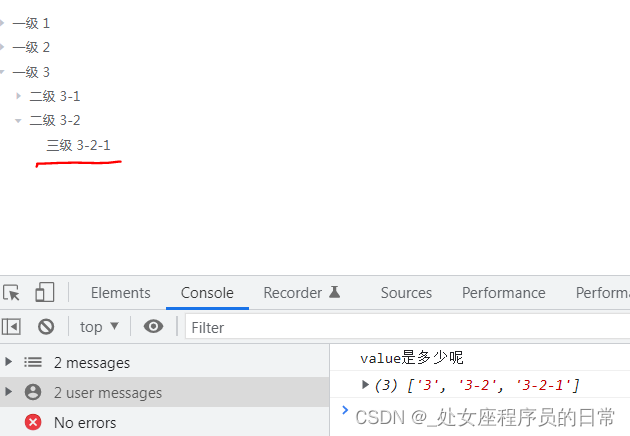
How to get the parent node of all nodes in El tree

【无标题】
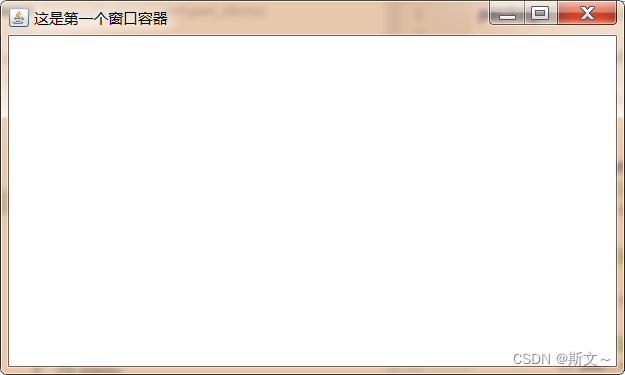
Component、Container容器常用API详解:Frame、Panel、ScrollPane
![BUU-Crypto-[GUET-CTF2019]BabyRSA](/img/87/157066155e8d3a93e30a68eaf1781b.jpg)
BUU-Crypto-[GUET-CTF2019]BabyRSA
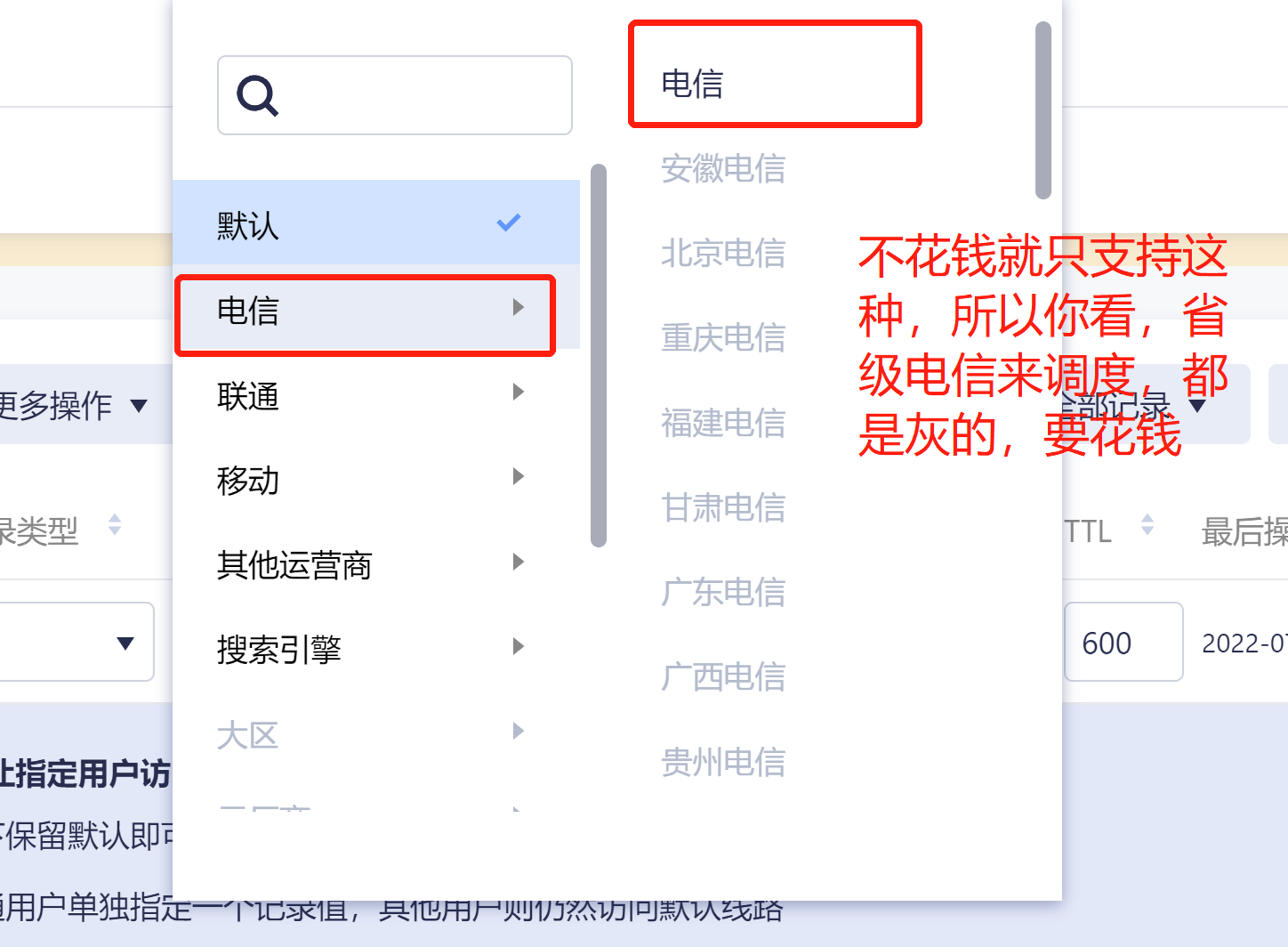
gslb(global server load balance)技术的一点理解
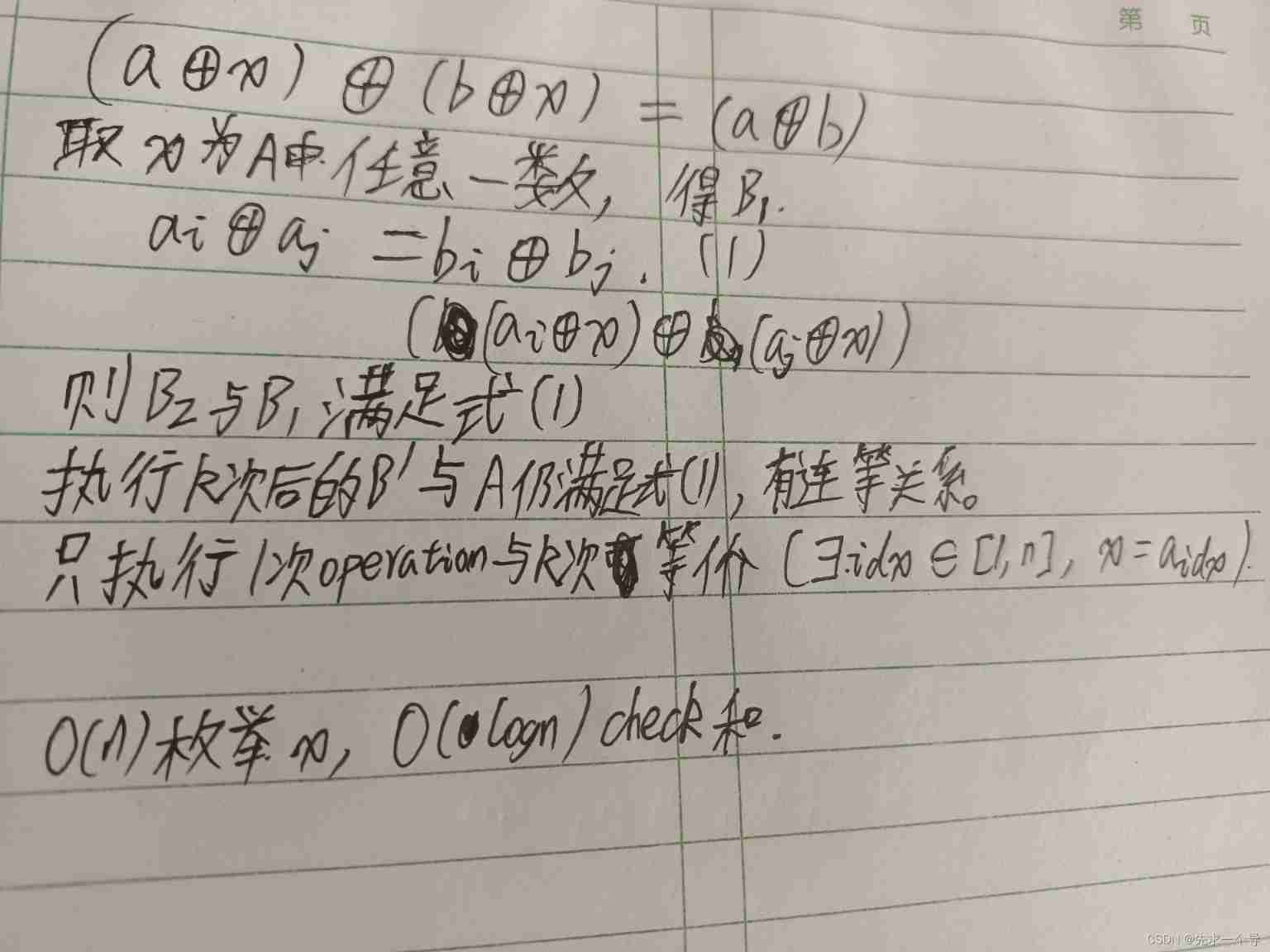
Arc135 C (the proof is not very clear)
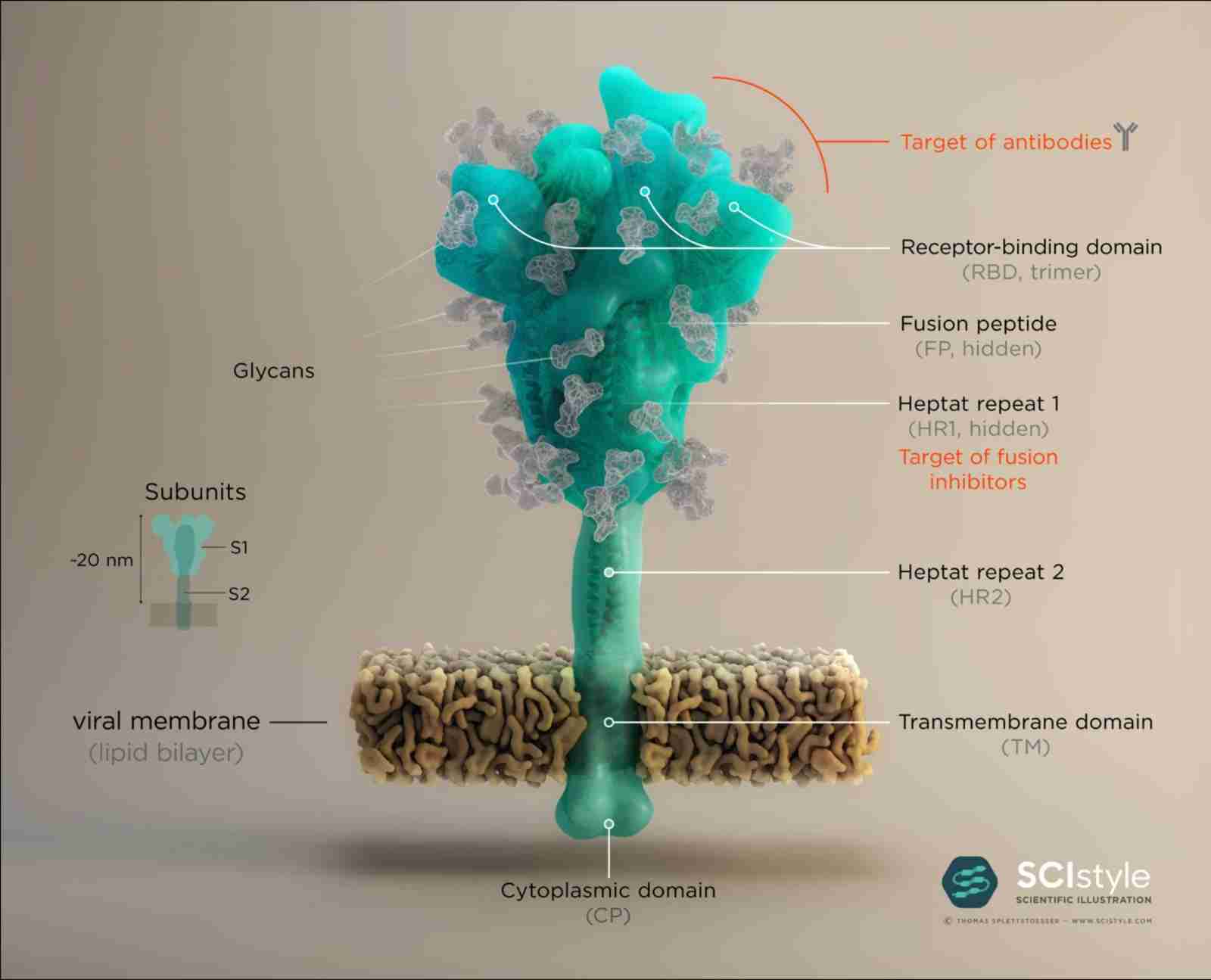
Review | categories and mechanisms of action of covid-19 neutralizing antibodies and small molecule drugs
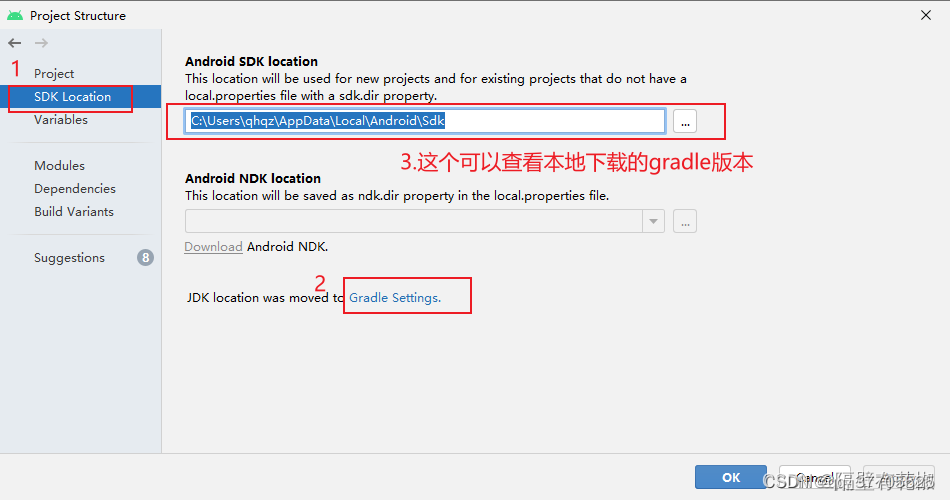
报错cvc-complex-type.2.4.a: 发现了以元素 ‘base-extension‘ 开头的无效内容。应以 ‘{layoutlib}‘ 之一开头。
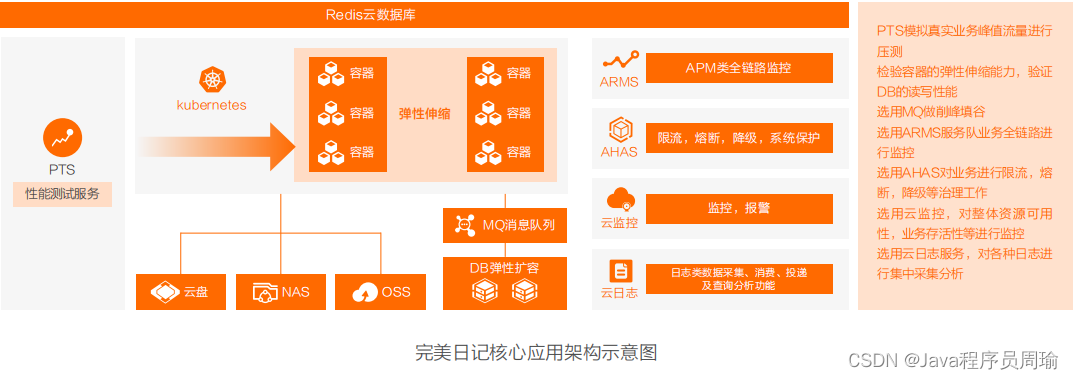
云原生架构实战案例及优化解决方案
随机推荐
BUU-Crypto-[HDCTF2019]basic rsa
检漏继电器JY82-2P
QT 获取随机颜色值设置label背景色 代码
Impact relay jc-7/11/dc110v
webrtc 快速搭建 视频通话 视频会议
Excel 比较日器
Luogu deep foundation part 1 Introduction to language Chapter 5 array and data batch storage
Online shrimp music will be closed in January next year. Netizens call No
px em rem的区别
BUU-Real-[PHP]XXE
Basic concept of bus
Build an Internet of things infrared temperature measuring punch in machine with esp32 / rush to work after the Spring Festival? Baa, no matter how hard you work, you must take your temperature first
LC weekly 300
Easy change
Flask
[Excel] 数据透视图
How to solve the component conflicts caused by scrollbars in GridView
体验碎周报第 102 期(2022.7.4)
[excel] PivotChart
Halcon image calibration enables subsequent image processing to become the same as the template image